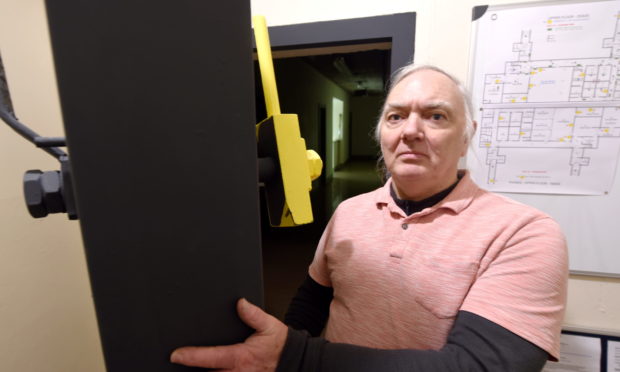A museum owner is hoping to track down an expert to help put together a World War Two radar system.
Dr Iain Maoileoin plans to open the attraction from a wartime bunker in Inverness after being forced to stop guided tours of the underground facility during the pandemic.
He has now taken delivery of two almost complete radar sets from an American donor who kept them in a hangar in Arizona for nearly 40 years.
However the equipment, which arrived in five crates weighing nearly two tons, has come without assembly instructions.
Dr Maoileoin said he has a “veritable Lego set” of parts and now hopes to find a technician who worked with the radar system at least 30 years ago to help construct it and provide some history and stories about its use.
The pair of AN/APS20 aircraft-borne radar came into service at the end of the war. The dishes are about 8ft long and 2ft high and rotated 3-6 times per minute on the aircraft to produce a radar plot of the area about 100 miles around the aircraft.
Dr Maoileoin said they were used for almost 50 years after their initial deployment until 1991, first on the Fairey Gannet aircraft, which were retired around 1971, and later on the Avro Shackleton.
He believes the planes were initially stationed at Kinloss and later moved to Lossiemouth where they were operated and maintained by Number 8 Squadron at Lossiemouth.
“We would be very keen to communicate with anyone involved in the use of this equipment to collect some history and stories about the equipment as used and to help us design/assemble a museum display of the equipment.
“I think a rotating 8ft radar dish is something that both kids and adults will want to see.”
The bunker, a listed building, was once a round-the-clock radar tracking base and later became an emergency operations centre for Highland Council. At the time it was nuclear, biological and chemical resistant and was intended to be the control point for the area in the event of a nuclear strike.
After being acquired by Dr Maoileoin and the CSP Partnership guided tours were held around the empty building, including some on Christmas Day, before Covid-19 hit.
When possible he aims to re-open part of the bunker as a museum depicting its past as a radar centre, Cold War facility and emergency response base.
